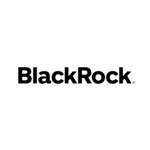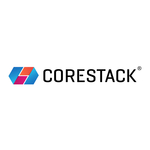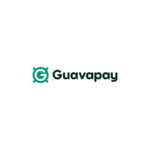Global Quantum Computing Software Market (2021 to 2026) – Growing Need for High-Level Computing Performance Presents Opportunities
Dublin, July 23, 2021 (GLOBE NEWSWIRE) — The “Global Quantum Computing Software Market by Component (Software, Services), Deployment Mode (Cloud, On-Premises), Organization Size, Technology, Application (Optimization, Simulation), Vertical (Bfsi, Government), and Region – Forecast to 2026” report has been added to ResearchAndMarkets.com’s offering.
The global Quantum Computing Software market size is projected to grow from USD 0.11 billion in 2021 to USD 0.43 billion in 2026, at a Compound Annual Growth Rate (CAGR) of 30.5% during the forecast period.
The major factors driving the growth of the Quantum Computing Software market include the growing adoption of quantum computing software in the BFSI vertical, government support for the development and deployment of the technology, and the increasing number of strategic alliances for research and development.
Based on component, the service segment is expected to lead the quantum computing software market during the forecast period
Among component segment, the services segment is leading the quantum computing software market in 2021. The growth of the services segment can be attributed to the increasing investments by start-ups in research and development related to quantum computing technology. Quantum computing software and services are used in optimization, simulation, and machine learning applications, thereby leading to optimum utilization costs and highly efficient operations in various industries.
Based on deployment mode, the cloud segment is expected to lead the quantum computing software market during the forecast period
Among deployment mode, the cloud segment is projected to dominate the global quantum computing software market in terms of market share. The cloud-based approach is expected to become a significant revenue source for quantum computing software and service providers, with users paying for access to noisy intermediate-scale quantum (NISQ) systems that can solve real-world problems. High costs and complexity of the quantum computing system, software, and services are influencing enterprises to deploy cloud-based machines.
Based on vertical, the healthcare & life sciences vertical segment is expected to grow at a higher CAGR during the forecast period
The healthcare & life sciences vertical is expected to grow at the highest CAGR during the forecast period. Quantum computing technology enables scientists to develop medical and diagnostics tools that are ultra-precise and ultra-personalized. Moreover, quantum sensors can be used in magnetic resonance imaging (MRI) machines for ultra-precise measurements. These developments can enhance the quality of healthcare services. Various applications of quantum computing in the healthcare industry include optimization of radiotherapy treatments, creation of protein models, generation of targeted cancer drug therapies, and analysis of DNA.
APAC is expected to grow at a higher CAGR during the forecast period
APAC is projected to be the fastest-growing region in the quantum computing software market due to the increase in adoption of new technologies, rising investments for digital transformation, and growing GDP in APAC countries. A majority of the potential economies in the region include Australia, Singapore, China, and India, which are rapidly investing in technological transformations.
Key Topics Covered:
1 Introduction
2 Research Methodology
3 Executive Summary
4 Premium Insights
4.1 Attractive Opportunities in Quantum Computing Software Market
4.2 Asia-Pacific Market, by Component and Country
4.3 Market: Major Countries
5 Market Overview
5.1 Introduction
5.2 Market Dynamics
5.2.1 Drivers
5.2.1.1 Growing Adoption of Quantum Computing Software in Banking, Financial Services, and Insurance Vertical
5.2.1.2 Government Support for Development and Deployment of Quantum Computing Technology
5.2.1.3 Increasing Number of Strategic Alliances for Research and Development
5.2.2 Restraints
5.2.2.1 Technical and Implementation Challenges
5.2.3 Opportunities
5.2.3.1 Growing Adoption of Quantum Computing Technology in Healthcare Vertical
5.2.3.2 Growing Need for High-Level Computing Performance
5.2.4 Challenges
5.2.4.1 Lack of Highly Skilled Professionals
5.3 Impact of COVID-19 on Quantum Computing Software Market
5.3.1 Pre-COVID-19
5.3.2 Post-COVID-19
5.4 Case Study Analysis
5.4.1 Use of Quantum Computing in Advanced Machine Learning
5.4.2 Exploring Quantum Computing in Financial Services
5.4.3 Use of Quantum Computing to Improve Analysis of Medical Images
5.4.4 Development of New Chemicals with Quantum Computing
5.4.5 Trading Optimization with Quantum Computing
5.5 Value Chain Analysis
5.6 Ecosystem
5.7 Porter’s Five Forces Analysis
5.7.1 Threat from New Entrants
5.7.2 Threat of Substitutes
5.7.3 Bargaining Power of Suppliers
5.7.4 Bargaining Power of Buyers
5.7.5 Intensity of Competitive Rivalry
5.8 Patent Analysis
5.9 Pricing Model Analysis
5.10 Trade Analysis
5.11 Regulatory Landscape
6 Quantum Computing Software Market, by Component
6.1 Introduction
6.1.1 Component: COVID-19 Impact
6.2 Software
6.2.1 Software: Market Drivers
6.3 Services
6.3.1 Quantum Computing as a Service (Qaas)
6.3.2 Quantum as a Service: Quantum Computing Software Market Drivers
6.3.3 Consulting Services
6.3.4 Consulting Services: Market Drivers
7 Quantum Computing Software Market, by Organization Size
7.1 Introduction
7.1.1 Organization Size: COVID-19 Impact
7.2 Large Enterprises
7.2.1 Large Enterprises: Market Drivers
7.3 Small and Medium Enterprises
7.3.1 SMEs: Market Drivers
8 Quantum Computing Software Market, by Deployment Mode
8.1 Introduction
8.1.1 Deployment Mode: COVID-19 Impact
8.2 On-Premises
8.2.1 On-Premises: Market Drivers
8.3 Cloud
8.3.1 Cloud: Market Drivers
9 Quantum Computing Software Market, by Application
9.1 Introduction
9.1.1 Application: COVID-19 Impact
9.2 Optimization
9.2.1 Optimization: Market Drivers
9.3 Machine Learning
9.3.1 Machine Learning: Market Drivers
9.4 Simulation
9.4.1 Simulation: Market Drivers
9.5 Others
10 Quantum Computing Software Market, by Technology
10.1 Quantum Artificial Intelligence
10.2 Quantum Machine Learning
10.3 Quantum Computing and Internet of Things
10.4 Quantum Communication Technology
10.5 Quantum Computing Academia
10.6 Cybersecurity Transformation
11 Quantum Computing Software Market, by Vertical
11.1 Introduction
11.1.1 Vertical: COVID-19 Impact
11.2 Aerospace & Defense
11.2.1 Aerospace & Defense: Market Drivers
11.3 Banking, Financial Services, and Insurance
11.3.1 Bfsi: Market Drivers
11.4 Healthcare & Life Sciences
11.4.1 Healthcare & Life Sciences: Quantum Computing Software Market Drivers
11.5 Energy & Utilities
11.5.1 Energy & Utilities: Market Drivers
11.6 Chemical
11.6.1 Chemical: Market Drivers
11.7 Transportation & Logistics
11.7.1 Transportation & Logistics: Market Drivers
11.8 Government
11.8.1 Government: Market Drivers
11.9 Education
11.9.1 Education: Market Drivers
12 Quantum Computing Software Market, by Region
13 Competitive Landscape
13.1 Overview
13.2 Market Evaluation Framework
13.3 Market Ranking
13.4 Market Share Analysis
13.5 Key Market Developments
13.5.1 New Product Launches
13.5.2 Deals
13.6 Company Evaluation Matrix
13.6.1 Star
13.6.2 Emerging Leader
13.6.3 Pervasive
13.6.4 Participant
13.7 Start-Up/SME Evaluation Matrix, 2021
13.7.1 Progressive Company
13.7.2 Responsive Company
13.7.3 Dynamic Company
13.7.4 Starting Block
14 Company Profiles
14.1 Introduction
14.2 Major Players
14.2.1 Ibm
14.2.2 Microsoft
14.2.3 Aws
14.2.4 D-Wave Systems
14.2.5 Rigetti Computing
14.2.6 Google
14.2.7 Honeywell
14.2.8 Qc Ware
14.2.9 1Qbit
14.2.10 Cambridge Quantum Computing
14.2.11 Fujitsu
14.2.12 Huawei
14.2.13 Accenture
14.3 Other Players
14.3.1 Riverlane
14.3.2 Zapata Computing
14.3.3 Quantum Circuits
14.3.4 Quantica Computacao
14.3.5 Xanadu
14.3.6 Quantastica
14.3.7 Veriqloud
14.3.8 Avanetix
14.3.9 Kuano
14.3.10 Rahko
14.3.11 Ketita Labs
14.3.12 Aliro Quantum
15 Adjacent/Related Markets
16 Appendix
For more information about this report visit https://www.researchandmarkets.com/r/z4ng41
CONTACT: CONTACT: ResearchAndMarkets.com
Laura Wood, Senior Press Manager
[email protected]
For E.S.T Office Hours Call 1-917-300-0470
For U.S./CAN Toll Free Call 1-800-526-8630
For GMT Office Hours Call +353-1-416-8900


































